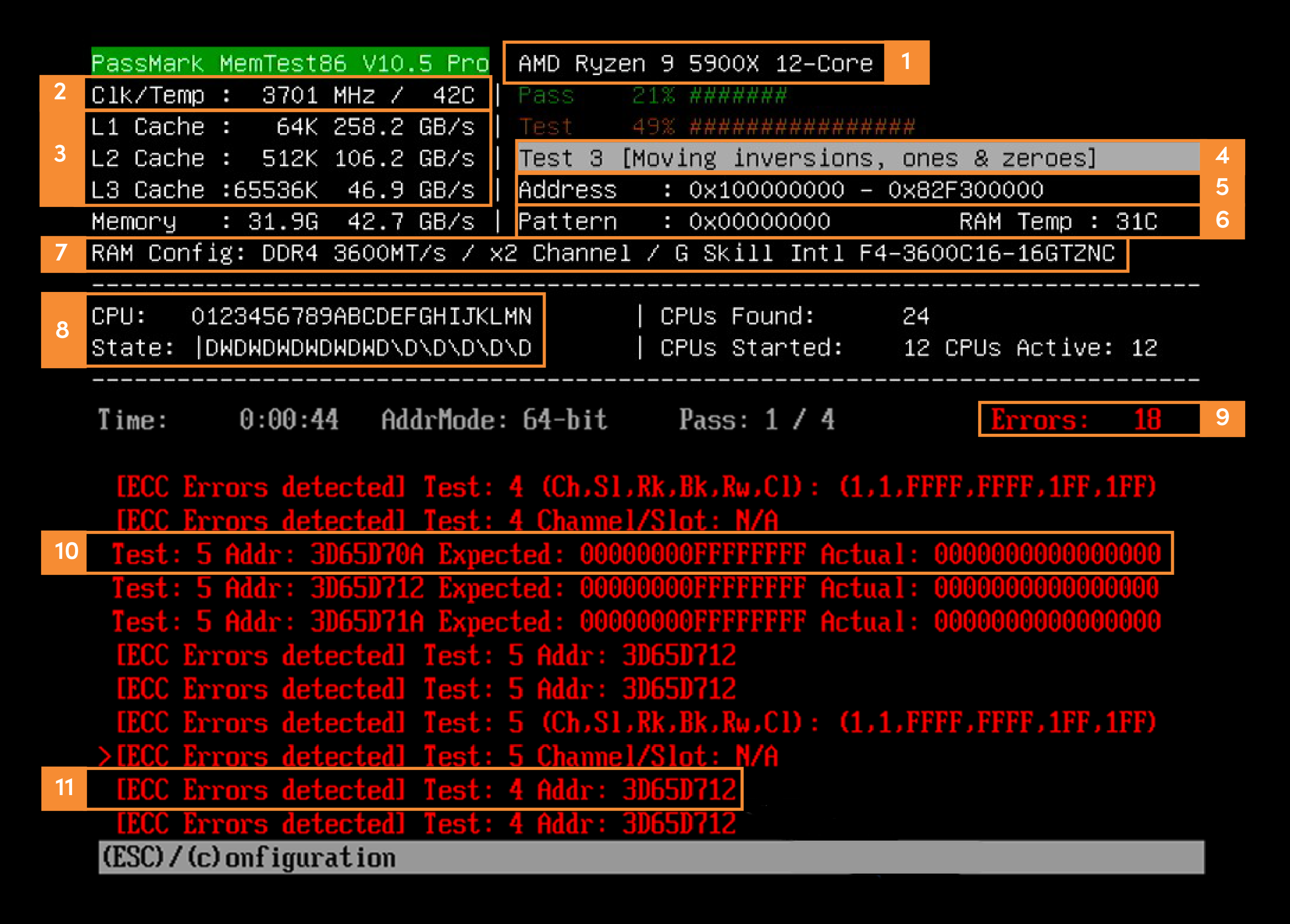What's New in MemTest86 for the UEFI platform (Version 5 and later)?
MemTest86 supports booting from the newer UEFI platform. When booting from UEFI, MemTest86 has access to additional services not available in BIOS including:
- Native 64-bit support
- Addition of 2 new memory tests to take advantage of 64bit data and SIMD instructions.
- Code optimizations leading to speed improvements of up to 30%. Especially for tests, #5, #8 & #9. This is the result of using native 64bit code, removing the PAE paging hack, applying modern compiler optimizations and using faster random number generation algorithms.
- Eliminating the PAE workaround (previously required for 32-bit systems to access more than 4GB of memory. [PAE = Physical Address Extension])
- Improved multi-threading support, where supported by the underlying UEFI system
- Graphical interface with mouse input where supported by the underlying UEFI system
- Improved USB keyboard support, including systems that fail to emulate IO Port 64/60 correctly (eg. Mac USB keyboards)
In addition, MemTest86 has been enhanced with the following features:
- Reporting of configured RAM parameters including clock speed, timings, channel mode and voltages (limited to supported chipsets, ongoing development)
-
Reporting of detailed RAM SPD information including timings, clock speeds, vendor names and much more
- Support for DDR5 RAM (and associated hardware), including retrieval and reporting of DDR5-specific SPD details. This includes DDR5 RAM that support Intel XMP 3.0 and/or AMD EXPO profiles.
-
ECC error reporting (limited to supported chipsets, ongoing development)
- Reporting of ECC capabilities and operation mode
- Reporting of detected and corrected ECC errors
- Injection of ECC errors for test purposes. (limited hardware only)
-
Faulty DRAM module and chip identification(limited to supported chipsets, ongoing development)
- Per-module/per-chip error tracking and reporting
- Results summarized in a simplified graphical display/HTML report
- Real-time RAM timings and temperature monitoring (limited to supported chipsets, ongoing development)
- Option to disable CPU caching for all or individual tests
- Support for storing logs and reports to disk/network. In all prior MemTest86 releases, there was no disk or network support.
- Manage large-scale production line memory testing via PXE-based deployment to 100+ test targets
- Full test automation via configuration file
- Secure Boot signed by Microsoft for ensuring software integrity
See the feature comparison page for a summary of the differences between the various editions of MemTest86.
MemTest86 can boot from a USB flash drive or, with Linux systems, by the boot loader (for example, LILO or Grub). Any Windows, Linux or Mac system may be used to create the USB flash drive. Once a MemTest86 boot disk has been created, it may be used on any x86 (PC/Mac) or ARM computer.
MemTest86 (Site Edition) supports network (PXE) boot for scalable deployment to multiple client machines in the LAN network. In this configuration, no disks are required; only a PXE Server and PXE boot enabled clients are required to support network boot.
Elements of the Test Screen

1. CPU Model
2. CPU Clock Speed / CPU Temperature
3. Cache Information
4. Test Currently Running
5. Memory Address
6. Test Pattern
7. RAM Model and Speed
8. CPU Cores Running Test
9. Number of Errors
10. RAM Errors (uncorrected)
11. RAM Errors (corrected)




